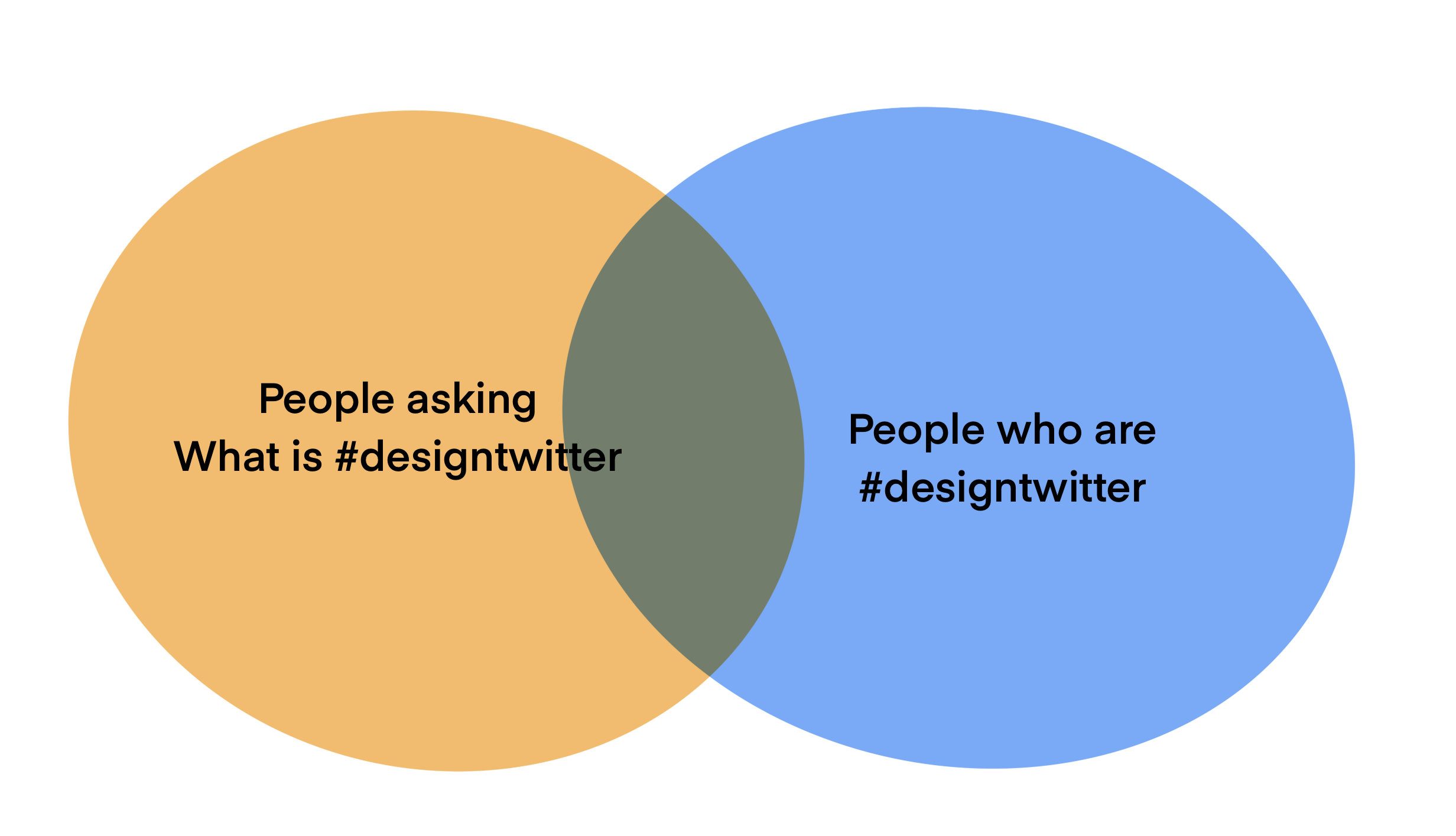
What's #DesignTwitter?
Unless you've been on a "detox", you've likely come across #designtwitter on twitter.
It's not a hashtag. Most conversations don't even use the hashtag.
So what is it?
It's People & Conversations.
Follow enough designers and (or) tweet enough about design topics, and you're design twitter!
The industry can't get enough of designers, and we see some remarkable talent emerge across the world as the internet removes any hurdles from education & experience. As the number of designers in the industry grows, so does the number of designers on various social platforms. [1]
On LinkedIn & Instagram, there's a new trend of quick-tips & slides (which are a notch better than what dribble conversations have been about):

On twitter, designers talk a lot. Lately, we've gone from mutual congratulatory phase to having serious conversations about sensitive topics. You may have noticed some:
- Are Graphic Design skills mandatory for designers? UX artefacts don't "look good"; does that disqualify UX folks from being "designers"?
- Pablo Stanely released free illustrations. Some members of the community said that free stuff is devaluing Graphic Designers.
Ignoring the twitter-tone effect [2], we hit upon legit questions facing our industry — Graphic Design pay has been stagnant in places for a while. [3] If I know anything about the world, the free tools and resources will only increase — we need a more conversation about this. - Facebook from FACEBOOK released Facebook News at the worst time possible, which aligned well with the company's tone-deaf brand. [4]
While designers working on the project celebrated their work; — many questioned their ethics and role as an enabler.
Which leads us to a conversation about privilege, power, and which inevitably leads us to the current form capitalism & its effects on society.
*Phew*
Wait, are #1 & #2 related? 🤔
DesignTwitter can be intense. And for good reasons.
While twitter-tone needs a lot of work; we must continue to participate in these difficult conversations. This is what makes us a community and helps us grow.
It's important to voice your opinion in the matter, and it's equally important to take some notes home for research, and look for contradictory perspectives to challenge your own. Otherwise, it's just an online brawl.
Here are some tips I found helpful:
- Ask questions: A superpower which very few people practice.
- Show & Tell: You don't need to wait for a blog-post — tweetstorm is the new blog-post; blogposts & series are the new books.
Twitter's can also be an excellent place to get early adopters or to get feedback on WIP. - Share what you found & kept: Found something cool? Show us all! Hell, become a thread collector
- Or worship your favourite design tool
- Start a fight or let out "steam" (can be bad for mental health, though)
On Design Process
Lately, the design team at Headout has been discussing our design process — we are also speaking to other designers to understand how they solve specific process/management problems.
While the majority of portfolios & case study show some versions' of IDEO's design thinking process; in-reality no process is ever that neat.
How does your design process work? Does it have clear & separate steps? Are all stages in the process always followed? How do you document and train people around the process?
I would love to know more about your design process & your thoughts about the design process in general. ( Reply to this email)
Footnotes
[1] Speaking of social media trends; Dribbble seems to be waking up & engaging with the community — building depth into their content (which has been the biggest criticism for the community they foster). Compare that to Behance, which has super rich content but is terrible as a publishing/engagement platform.
[2] Twitter-tone Effect: Twitter's primary stance is "broadcast & read" — the real value, however, is in conversations. This need to "broadcast" (combined with twitter's mystical policies) makes people take an absolutist-like stance (this is the only truth).
Compare this with LinkedIn-tone:
On Twitter: X is the only right way to do this; don't @ me.
On LinkedIn: we did X and achieved Y, pros & cons, we are so good at this.
[3] Graphic Designer Pay: Haven't found reliable data around this; please share if you have some.
[4] Interesting though, the brands not associated with word "Facebook" don't get as much hate.
A point in case:
Instagram by Facebook released a new app "Threads from Instagram from FACEBOOK", (and "Close Friends" feature on their main app). While Facebook & Instagram and all their "network" apps share the same underlying ad-engine (and therefore enable same misinformation campaigns) doesn't raise as many eyebrows.
But as the FACEBOOK brand becomes more prominent; it'd be interesting to see how we feel about Zukerology.
Speaking of Threads, if you're wondering what's the point; you've never made a finsta (an alternate/fake private Instagram account for close friends).
Why a whole different app and not just the close friends feature? Man, I don't know I don't want to risk posting finsta stuff to the rest. 🤫
You are reading a post that I wrote a long time back—at least 5 years ago. Take it with a bag of salt.
About Sidharth · Listen to the Podcast · Talks